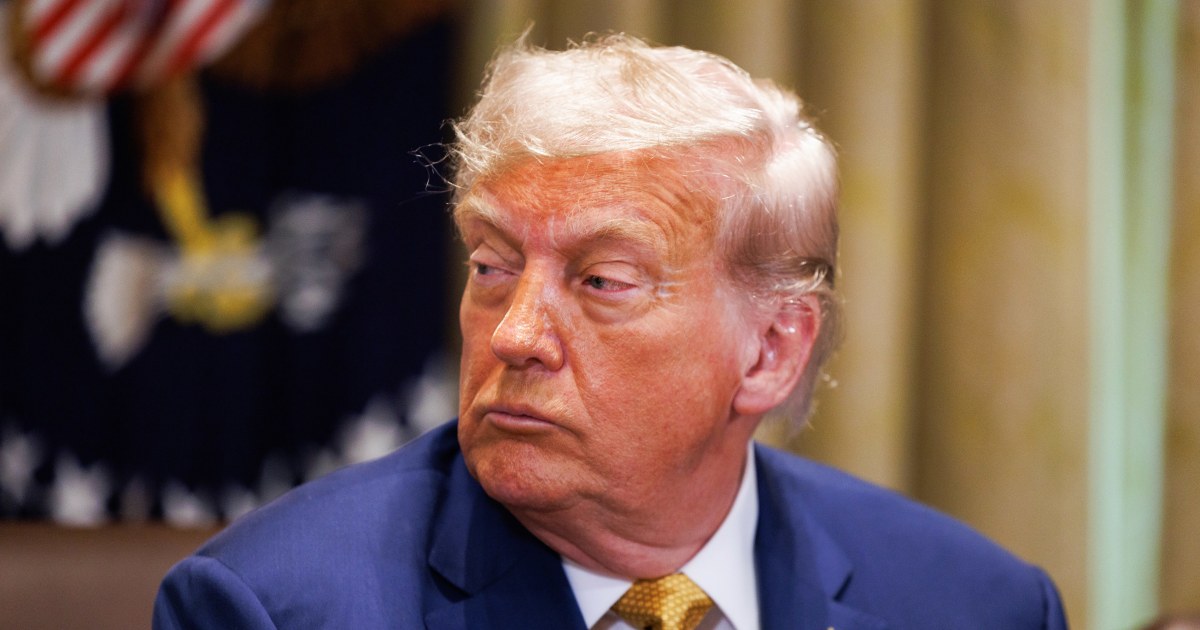President Donald Trump on Saturday threatened a significant tariff hike on the European Union and Mexico, two of the largest U.S. trade partners.
In separate letters published on his social media platform, Truth Social, Trump wrote that each country will face a blanket tariff rate of 30% on all goods exported to the U.S. starting Aug. 1.
Trump threatened even higher tariffs if either the E.U. or Mexico retaliate against his new levy.
Writing to Mexico’s president, Trump also focused on border security, saying that “Mexico has been helping me secure the border, BUT, what Mexico has done, is not enough.”
“Mexico still has not stopped the Cartels who are trying to turn all of North America into a Narco-Trafficking Playground,” he added.
Trump has spent the past week bringing his trade war back to a roaring boil. He kicked it off by issuing dozens of letters announcing unilateral tariffs, then said he planned to impose 50% duties on copper goods, sending prices of the raw metal to all-time highs. Late Thursday, he announced he would apply a blanket tariff of up to 20% on all imports, as well as a 35% tariff to some, and perhaps all, Canadian imports starting next month.
The letters come as the many trade deals that Trump administration officials had said would be signed have failed to materialize, leaving Trump with little to show for weeks of negotiations.
While Mexico was spared from Trump’s so-called “Liberation Day” tariff rollout on April 2, the 30% rate for the E.U. is 10% higher than what the president said he would apply to America’s largest trading partner in April but lower than his mid-May threat of 50%.
The 27-member European Union is the United States’ largest trading partner — its $605 billion worth of imports into the U.S. surpassing Mexico, Canada, and even China. The most valuable category was drugs and pharmaceuticals, followed by autos and aircraft and other heavy machinery. Trump has already threatened to impose a 200% tariff on any drugs imported into the U.S., though it would not be applied for at least 18 months.
European Commission President Ursula von der Leyen responded to Trump’s letter, saying in a statement that “few economies in the world match the European Union’s level of oppenness and adherence to fair trading practices.”
But von der Leyen said she “will take all necessary steps to safeguard EU interests,” including retaliatory tariffs “if required.”
Mexico meanwhile is another one of the United States’ most important trading partners, with more than $505 billion worth of goods imported by American consumers and companies in 2024.
Mexico made up 69% of U.S. vegetable imports and 51% of U.S. fresh fruit imports in recent years, according to U.S. Agriculture Dept. data. With short shelf lives, consumers could experience price hikes faster than with other goods.
Markets had spent most of the week brushing off the earlier escalations, leaving stocks largely at the record highs they’d regained thanks largely recent weeks’ trade-war lull. Trump himself touted the gains in an exclusive interview with NBC News.
But on Friday major indexes closed lower on the heels of Trump vowing to hit Brazil, a key source of commodities like coffee and orange juice, with a 50% tariff. Trump said the tariff was so high because of “unsustainable Trade Deficits” even though the U.S. currently runs at a surplus in its trade with Brazil.
Trump also said “the way Brazil has treated former President Bolsonaro … is an international disgrace.”
In the case of the E.U., the bloc currently has more than $100 billion of retaliatory tariffs on standby that can be quickly implemented. Some of those retaliatory duties target goods made in Republican-represented states, such as soybeans from Speaker Mike Johnson’s home state of Louisiana and bourbon from Kentucky, which is represented in the House and Senate by a nearly all-Republican delegation.
Other retaliatory tariffs could target Boeing planes and U.S.-built vehicles.
Analysts say the new tariffs onslaught adds further risk to an inflation outlook that has already been teetering on edge.
“Higher tariffs going into effect in August also could mean that inflationary effects come through later this year or even into next year, extending the timeline on higher inflation,” analysts with Citi wrote in a note to clients published Friday.
The European Commission, the executive arm of the E.U., has been furiously negotiating toward an “agreement in principle” in order to avoid the outcome of getting hit with one of Trump’s tariff letters.
Speaking on Wednesday before the European Parliament, the E.U.’s top trade official Maroš Šefčovič said negotiations were happening “every single day” between the two sides. “Crucially, while other nations faced increased tariffs from United States, the result of the letters that President Trump sent out on Monday, our negotiations have spared the E.U. from facing higher tariffs.”
However, Šefčovič noted that U.S. side had “differing perspectives” about the international trading relationship.
In the hour leading up to Trump’s announcement, an E.U. official said that while they were “fully locked and loaded to conclude an agreement in principle,” they “don’t have any update to indicate that that is going to happen imminently.”


